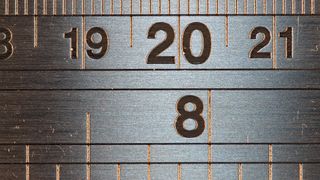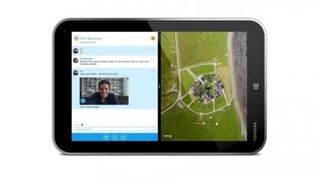Why 8-inch tablets are the most compelling Windows 8 devices yet
The Iconia W3 and Encore are an imperfect start but a promising one

Windows 8 isn't perfect, but it should be applauded for giving birth to the many new form factors that have lit up the market over the past 10 months - from the bonkers to the
.
Until recently, however, none of them have convinced me that I need a Windows 8 device in my life. I use a MacBook Air as my primary machine, and even that has the operating system installed in a Boot Camp partition for when I occasionally need to make the switch.
That all changed after five minutes with Acer's Iconia W3 at a Microsoft event back in June. Its screen was hideous, the keyboard borderline comical and the bezel infantile, but there was something there. It was different. Alluring.

Maybe it was holding the desktop, the culmination of four centuries of advancements in computing, in a single hand alongside touch, the next frontier. I could sling it into a big pocket or small bag for trips without sacrificing the functionality needed to get things done.
Long game
Of course, you could argue that Apple's 11-inch MacBook Air is slimmer and not that much longer, making it almost, if not just as portable as an 8-inch tablet. But OS X, like Linux, Chrome OS or any other platform on the market, isn't geared for touch, making it instantly less appealing.
Are you a pro? Subscribe to our newsletter
Sign up to the TechRadar Pro newsletter to get all the top news, opinion, features and guidance your business needs to succeed!
Though desktops are another matter, Windows 8 suddenly begins to make more sense on 8-inch devices. It makes you wonder why Apple isn't going for them by the jugular - and whether this is an omission that could cost it down the line.
And if the company does feel threatened, it won't be on the back of new 8-inch Windows tablets, which possess typical first gen flaws. The Iconia W3 is underpowered and feels sluggish. Even Toshiba's Encore tablet that was unveiled at IFA2013 this week, which features Intel's improved Bay Trail CPU, is still reportedly something of a slouch when it comes to tasks that most laptops would handle with ease.
But these devices are in their infancy, and they could become just as powerful, be fitted with increasingly clear displays and shed the pounds over time.

They could become our future desktop PCs hooked up to monitors to be used with a keyboard and mouse. And as this happens, Microsoft's Windows Store will (with any luck) become populated with more apps of increasing quality until it can call itself a competitor to Apple's ecosystem without feeling sheepish.
You'll be able to use 8-inch devices anywhere for almost any purpose, from typing out documents on Office 2013 to gaming (desktop or touch-oriented apps), playing media or doing anything else you can on a desktop or tablet. How about taking one to a LAN party to hook it up to a monitor? The possibilities are endless.
Here and now
For some, the 1,280 x 800-pixel-resolution featured on the the Iconia W3 and Encore may seem too low for serious productivity work, but it still allows two documents to be positioned side by side and Windows 8.1's scaling capabilities will help make use of screen real estate.
Such devices are also comfortable to use held vertically as Microsoft has optimised portrait tablet support. Amazon's Kindle app feels natural to use on the Iconia W3, and there are no doubt many others waiting to benefit from the orientation. They also offer impressive battery life, even without Haswell.
Of course, you may argue that the iPad Mini or Google's new Nexus 7 slates are attractive for the same reasons and are even more portable at seven inches.
But the fact is, Android or iOS just aren't anywhere near as capable as full-fat Windows 8. Even the much-maligned Windows RT is arguably more useful. But then, if you don't need a device for productivity, those in the smaller category will likely suffice.
The barrier to 8-inch Windows 8 tablets realising their potential is undoubtedly cost. How do you make a device that's powerful enough to run demanding applications, is almost as portable as a smartphone yet is cheap enough for the masses? It's unclear, but it will be entertaining watching OEMs and (hopefully) Microsoft give it a good shot.
Most Popular


